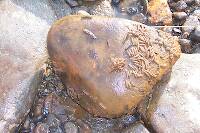
Blue-winged Olives
Baetis
Tiny Baetis mayflies are perhaps the most commonly encountered and imitated by anglers on all American trout streams due to their great abundance, widespread distribution, and trout-friendly emergence habits.
Featured on the forum

Troutnut is a project started in 2003 by salmonid ecologist Jason "Troutnut" Neuswanger to help anglers and
fly tyers unabashedly embrace the entomological side of the sport. Learn more about Troutnut or
support the project for an enhanced experience here.
Falsifly on Dec 25, 2007December 25th, 2007, 11:58 am EST
I think some of the more scientifically inclined contributors to this site might find this an interesting tidbit. I came across it during a Google search and decided to forward it here. Up to this point I’ve never given it much thought but it does offer a plausible possibility.
But than again you guys may be way ahead of me on this one.
http://jeb.biologists.org/cgi/content/abstract/207/5/755
But than again you guys may be way ahead of me on this one.
http://jeb.biologists.org/cgi/content/abstract/207/5/755
Falsifly
When asked what I just caught that monster on I showed him. He put on his magnifiers and said, "I can't believe they can see that."
When asked what I just caught that monster on I showed him. He put on his magnifiers and said, "I can't believe they can see that."
Taxon on Dec 25, 2007December 25th, 2007, 1:14 pm EST
Allan-
That's an interesting theory, which I hadn't heard before. My suspicion is that optimal water detection may be but one of several reasons for the increased insect flight at dusk. In any event, Merry Christmas to you, and thanks for sharing.
That's an interesting theory, which I hadn't heard before. My suspicion is that optimal water detection may be but one of several reasons for the increased insect flight at dusk. In any event, Merry Christmas to you, and thanks for sharing.
Quick Reply
Related Discussions
Topic
Replies
Last Reply
0
Dec 7, 2006
by Troutnut
by Troutnut





